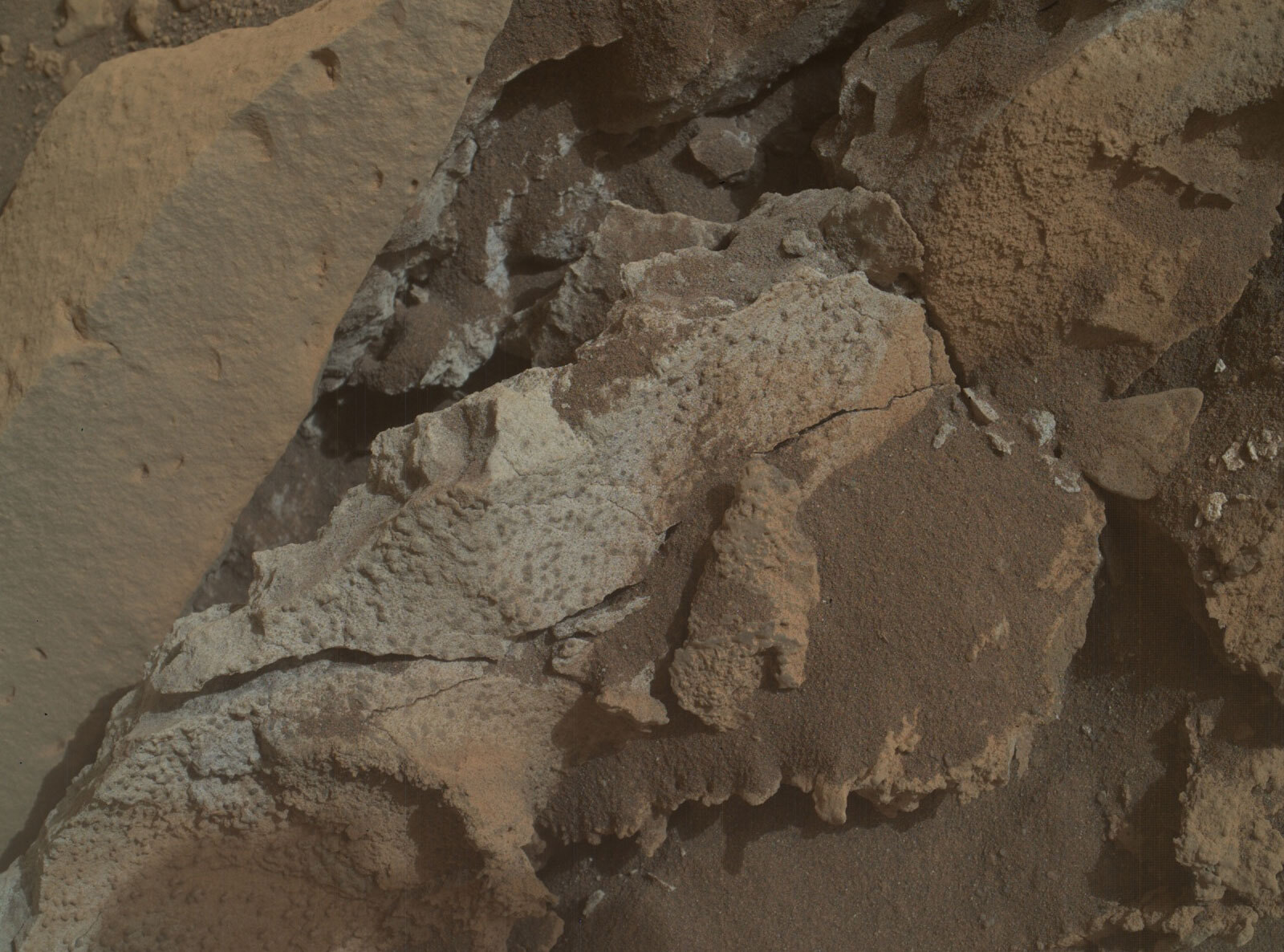2 min read

Entering the weekend, we have a few more 'rad' rocks we'd like to get some science on before we drive farther away from the Greenheugh pediment and begin our journey again up Mt. Sharp. Starting on sol 3453, we break out our arm instruments for contact science with APXS and MAHLI on "Rumblings," a rock with an interesting knobby texture, followed by a delta over to "Delting," a flat area on some nearby bedrock, first by scrubbing the rock clean(ish) with the dust removal tool (DRT), then repeat a similar set of observations with those previous instruments. ChemCam will also collect science on "TIngaholm," perhaps a filled fracture, and some long distance RMI imaging of the Gediz Vallis ridge to examine its stratigraphy. Speaking of 'rad', or in this case 'radiance', Mastcam coverage of the "Shandon" workspace in front of the rover, also covering "Tingaholm," will be taken, as well as on an AEGIS target (where ChemCam automatically shot a rock with its laser).
The next sol, sol 3454, includes Mastcam multispectral documentation for "Delting" and "Rumblings," with a separate stereo mosaic on "Clo Mor Cliffs." Additional ChemCam includes observations on the "Rumblings" target again (good for cross instrument comparisons) and a second extended RMI mosaic on Gediz Vallis ridge. Finally on sol 3455, the rover will scooch ahead and conduct some post drive NAVCAM imaging. Scattered across all sols are some Mastcam sky flat, tau, and clast survey imaging, Navcam dust devil and line-of-sight surveys, and one MARDI observation on sol 3454. One really 'rad' observation will be a ChemCam passive sky observation that is coordinated with the European Space Agency (ESA) Trace Gas Orbiter (TGO) when it flies over Gale crater to look at water, oxygen, and carbon dioxide abundance in the atmosphere from both the ground and orbit at the same time of day.
Written by Fred Calef, Planetary Geologist at NASA's Jet Propulsion Laboratory







